Gitty Djamal | |
|---|---|
گیتی جمال | |
| Born | Gitty Darugar May 11, 1936 |
| Occupation | Actress |
| Years active | 1957–1987 (film & TV) |
Gitty Djamal (born 11 May 1936) is an Iranian-German film and television actress. [1] She has also worked as a photographer.
Gitty Djamal | |
|---|---|
گیتی جمال | |
| Born | Gitty Darugar May 11, 1936 |
| Occupation | Actress |
| Years active | 1957–1987 (film & TV) |
Gitty Djamal (born 11 May 1936) is an Iranian-German film and television actress. [1] She has also worked as a photographer.
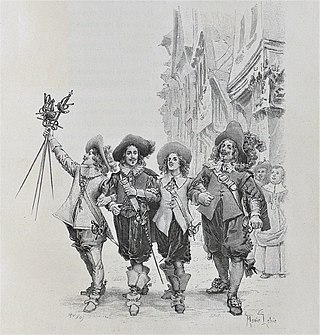
The Three Musketeers is a French historical adventure novel written in 1844 by French author Alexandre Dumas. As with some of his other works, he wrote it in collaboration with ghostwriter Auguste Maquet. It is in the swashbuckler genre, which has heroic, chivalrous swordsmen who fight for justice.

Porthos, Baron du Vallon de Bracieux de Pierrefonds is a fictional character in the novels The Three Musketeers (1844), Twenty Years After (1845), and The Vicomte de Bragelonne (1847–1850) by Alexandre Dumas, père. He and the other two musketeers, Athos and Aramis, are friends of the novel's protagonist, d'Artagnan. Porthos is a highly fictionalized version of the historical musketeer Isaac de Porthau.

Athos, Count de la Fère, is a fictional character in the novels The Three Musketeers (1844), Twenty Years After (1845) and The Vicomte de Bragelonne (1847–1850) by Alexandre Dumas, père. He is a highly fictionalised version of the historical musketeer Armand d'Athos (1615–1643).
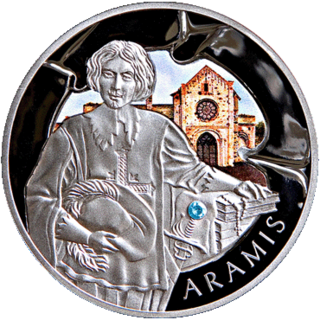
René d'Herblay, alias Aramis, is a fictional character in the novels The Three Musketeers (1844), Twenty Years After (1845), and The Vicomte de Bragelonne (1847–1850) by Alexandre Dumas, père. He and the other two musketeers, Athos and Porthos, are friends of the novels' protagonist, d'Artagnan.

Charles de Batz de Castelmore, also known as d'Artagnan and later Count d'Artagnan, was a French Musketeer who served Louis XIV as captain of the Musketeers of the Guard. He died at the siege of Maastricht in the Franco-Dutch War. A fictionalised account of his life by Gatien de Courtilz de Sandras formed the basis for the d'Artagnan Romances of Alexandre Dumas père, most famously including The Three Musketeers (1844). The heavily fictionalised version of d'Artagnan featured in Dumas' works and their subsequent screen adaptations is now far more widely known than the real historical figure.

The Three Musketeers (also known as The Three Musketeers (The Queen's Diamonds)) is a 1973 swashbuckler film based on the 1844 novel by Alexandre Dumas. It is directed by Richard Lester from a screenplay by George MacDonald Fraser, and produced by Ilya Salkind. It stars Michael York, Oliver Reed, Frank Finlay, and Richard Chamberlain as the titular musketeers, with Raquel Welch, Geraldine Chaplin, Jean-Pierre Cassel, Charlton Heston, Faye Dunaway, Christopher Lee, Simon Ward, Georges Wilson and Spike Milligan.

Edward Julius Elsaesser was an American politician and a U.S. Representative for the 43rd district of the state of New York.
Djamal Abdoulaye Mahamat Bindi, known as Mahamat, is a Libyan footballer who plays as a defensive midfielder.

Swashbuckler films are a subgenre of the action film genre, characterised by swordfighting and adventurous heroic characters, known as swashbucklers. While morality is typically clear-cut, heroes and villains alike often follow a code of honour. Some swashbuckler films have romantic elements, most frequently a damsel in distress. Both real and fictional historical events often feature prominently in the plot.

Martin Elsaesser was a German architect and professor of architecture. He is especially well known for the many churches he built.
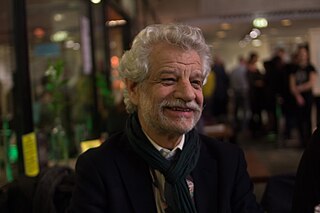
Thomas Elsaesser was a German film historian and professor of Film and Television Studies at the University of Amsterdam. He was also the writer and director of The Sun Island, a documentary essay film about his grandfather, the architect Martin Elsaesser. He was married to scholar Silvia Vega-Llona.

Salto Mortale is a West German television series. It centres around a troupe of trapeze artists, known as the Flying Dorias as they embark on a major European tour.

"Gitty Up" is a song by American hip hop girl group Salt-N-Pepa from their fifth studio album, Brand New (1997). It was released as the album's second and final single. It samples "Another Brick in the Wall Part 2" by Pink Floyd. The song also samples the lyric "Say what?" from the song "Give It to Me Baby" by Rick James.

The Best of Salt 'n Pepa is a greatest hits album by American hip hop trio Salt-N-Pepa. It was released in November 1999. The album featured tracks from their five studio albums, Hot, Cool & Vicious, A Salt with a Deadly Pepa, Blacks' Magic, Very Necessary and Brand New. A remixed version of their 1998 song "Gitty Up" was released as a single titled "The Brick Track Versus Gitty Up", which charted in the top 20 in Australia and New Zealand in 2000.

Ingeborg is a 1960 West German comedy film directed by Wolfgang Liebeneiner and starring Ingrid Ernest, Dietmar Schönherr and Walter Giller. The film's sets were designed by the art directors Wolf Englert and Ernst Richter.

Carnival Confession is a 1960 West German crime film directed by William Dieterle and starring Hans Söhnker, Gitty Djamal and Götz George.
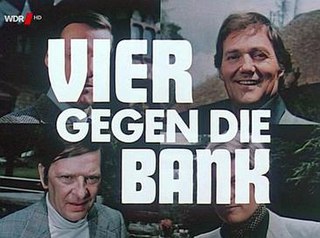
Vier gegen die Bank is a 1976 German crime comedy television film directed by Wolfgang Petersen. It was adapted from the novel The Nixon Recession Caper by Ralph Maloney and was produced for the German television station ARD. In 2016 it was remade under the same title for theatrical release.

Djamel Amrani was an Algerian writer of French expression.

Stage Fright or Lamp Fever is a 1960 West German drama film directed by Kurt Hoffmann and starring Dunja Movar, Bernhard Wicki and Antje Weisgerber.
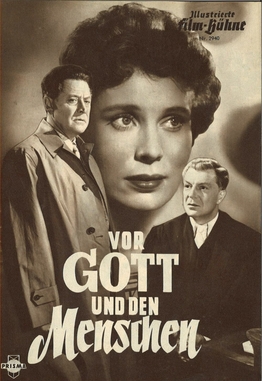
Before God and Man is a 1955 West German drama film directed by Erich Engel and starring Viktor de Kowa, Antje Weisgerber and Hans Söhnker. It was shot at the Tempelhof Studios in West Berlin. The film's sets were designed by the art directors Emil Hasler and Walter Kutz.